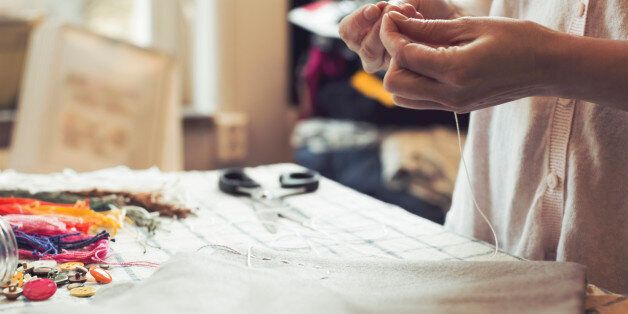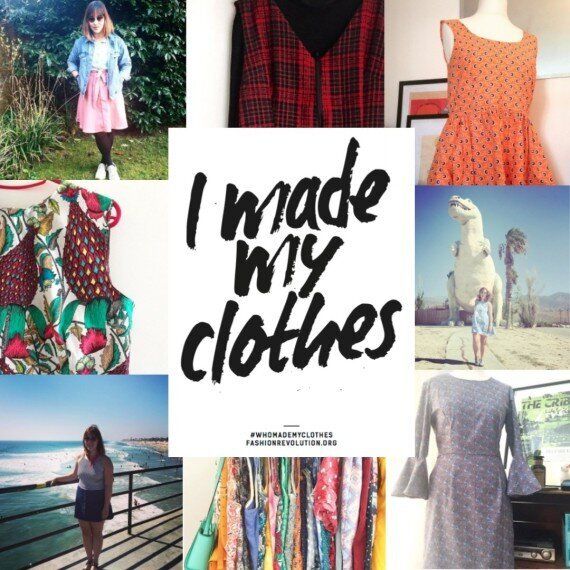
Our attitude to clothes and fashion is frivolous - it's estimated that the average British woman is hoarding £285 worth of clothes she will never wear. Fashion trends are moving ever faster and the rise of social media means we feel the need to keep up with the extensive wardrobes of celebrities, bloggers and peers whether we need it or not. But I think it's about time we started to slow down. We need to start embracing slow fashion and become truly conscious consumers.
Fashion Revolution is highlighting the importance of understanding where our clothes come from and most importantly being who made them. In their White Paper report they found that from 219 of the biggest retailers, only half knew the factories where their clothes are being made. Fashion Revolution emphasise that if the retailers have no idea who is making their products, how can they be looking out for their worker's human rights? With fashion being one of society's most influential and high-profile industries, isn't shocking that this ignorance is so high?
While work must be done to force retailers to understand where their clothes are being made, we shouldn't have to support their ignorance. So what better way to really understand who's making your clothes than to make them yourself?
For many people sewing and the idea of making your clothes is still something associated with grandparents and years past. But the rising popularity of sewing proves this doesn't have to be the case.
Sewing your own clothes allows you to take back ownership of your wardrobe. You can start making clothes that suit you, made from fabrics you choose, rather than being shaped by what retailers tell you you want.

The best thing about sewing is that it makes you think about what you really need. Instead of being able to buy something and wear it straight away, you have to put the time into making it; it makes you really appreciate the clothes that you have. You'll look at the clothes you've made and you'll understand the time and effort that went into making it. No longer will the maker of your clothes be a faceless, exploited person in a different country you've never been to. It will be you. Ultimately, what sewing gives you is the opportunity to make and wear fewer clothes, that you value more.
But while making your clothes is one step to becoming a conscious consumer, there are still further steps you can take as a maker. Understanding where your material comes from is as important as the making itself. Fashion is labour-intensive and beyond making the actual clothes there are millions of people involved in the production of the materials.
However, 91% of brands don't know where their cotton comes from. 75% don't know the source of their fabrics. Don't join them. While I'm not saying you have to go out there and weave your own fabrics there's no harm in knowing where they come from.
Places such as the Offset Warehouse bring together hand-picked eco fabrics, while many other fabric retailers are increasing their collections of organic fabrics, which allow you to make truly conscious textile choices.
The first step to improving the ethical quality of the fashion industry is yours to take. This Fashion Revolution week start to really understanding where your wardrobe comes from, and start to appreciate the clothing you have.
Book yourself onto a course, watch a YouTube video, find a friend (or a grandparent!) - anyone that knows how to sew. Start a club where you and your friends learn to sew together. Who knows, you might actually enjoy it and the next time someone asks you where you got your latest outfit from you can take pride in telling them "I made it myself"!
For more posts about sewing a handmade wardrobe check out my blog at dominiquemajor.wordpress.com
Come follow me:
Instagram - @dominique.major
Twitter - @dominiquemajor